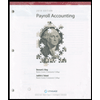
Fundamentals of Financial Management, Concise Edition
10th Edition
ISBN: 9781337911054
Author: Eugene F. Brigham, Joel F. Houston
Publisher: Cengage Learning US
expand_more
expand_more
format_list_bulleted
Question
Chapter 7, Problem 11Q
Summary Introduction
To identify: The difference between a call for sinking fund purposes and refunding call.
Introduction:
Sinking Fund: Sinking fund refers to the investment made by the issuer of the debt instrument annually, which is used to redeem bonds at maturity.
Expert Solution & Answer
Want to see the full answer?
Check out a sample textbook solution
Students have asked these similar questions
Co
Plz correct sol
Give true answer. Pl
Chapter 7 Solutions
Fundamentals of Financial Management, Concise Edition
Ch. 7 - A sinking fund can be set up in one of two ways:...Ch. 7 - Can the following equation be used to find the...Ch. 7 - The values of outstanding bonds change whenever...Ch. 7 - If interest rates rise after a bond issue, what...Ch. 7 - Discuss the following statement: A bonds yield to...Ch. 7 - Prob. 6QCh. 7 - Assume that you have a short investment horizon...Ch. 7 - Indicate whether each of the following actions...Ch. 7 - Why is a call provision advantageous to a bond...Ch. 7 - Prob. 10Q
Ch. 7 - Prob. 11QCh. 7 - Why are convertibles and bonds with warrants...Ch. 7 - Prob. 13QCh. 7 - Prob. 14QCh. 7 - Prob. 15QCh. 7 - Which of the following bonds has the most price...Ch. 7 - Prob. 17QCh. 7 - Prob. 1PCh. 7 - YIELD TO MATURITY AND FUTURE PRICE A bond has a...Ch. 7 - Prob. 3PCh. 7 - YIELD TO MATURITY A firms bonds have a maturity of...Ch. 7 - BOND VALUATION An investor has two bonds in his...Ch. 7 - BOND VALUATION An investor has two bonds in her...Ch. 7 - INTEREST RATE SENSITIVITY. An investor purchased...Ch. 7 - Prob. 8PCh. 7 - Prob. 9PCh. 7 - Prob. 10PCh. 7 - BOND YIELDS Last year Carson Industries issued a...Ch. 7 - Prob. 12PCh. 7 - PRICE AND YIELD A 7% semiannual coupon bond...Ch. 7 - Prob. 14PCh. 7 - BOND VALUATION Bond X is noncallable and has 20...Ch. 7 - Prob. 16PCh. 7 - Prob. 17PCh. 7 - YIELD TO MATURITY AND YIELD TO CALL Kempton...Ch. 7 - Prob. 19SPCh. 7 - BOND VALUATION Robert Black and Carol Alvarez are...
Knowledge Booster
Similar questions
arrow_back_ios
SEE MORE QUESTIONS
arrow_forward_ios
Recommended textbooks for you
 Intermediate Accounting: Reporting And AnalysisAccountingISBN:9781337788281Author:James M. Wahlen, Jefferson P. Jones, Donald PagachPublisher:Cengage Learning
Intermediate Accounting: Reporting And AnalysisAccountingISBN:9781337788281Author:James M. Wahlen, Jefferson P. Jones, Donald PagachPublisher:Cengage Learning
- Century 21 Accounting Multicolumn JournalAccountingISBN:9781337679503Author:GilbertsonPublisher:Cengage

Intermediate Accounting: Reporting And Analysis
Accounting
ISBN:9781337788281
Author:James M. Wahlen, Jefferson P. Jones, Donald Pagach
Publisher:Cengage Learning



Century 21 Accounting Multicolumn Journal
Accounting
ISBN:9781337679503
Author:Gilbertson
Publisher:Cengage
